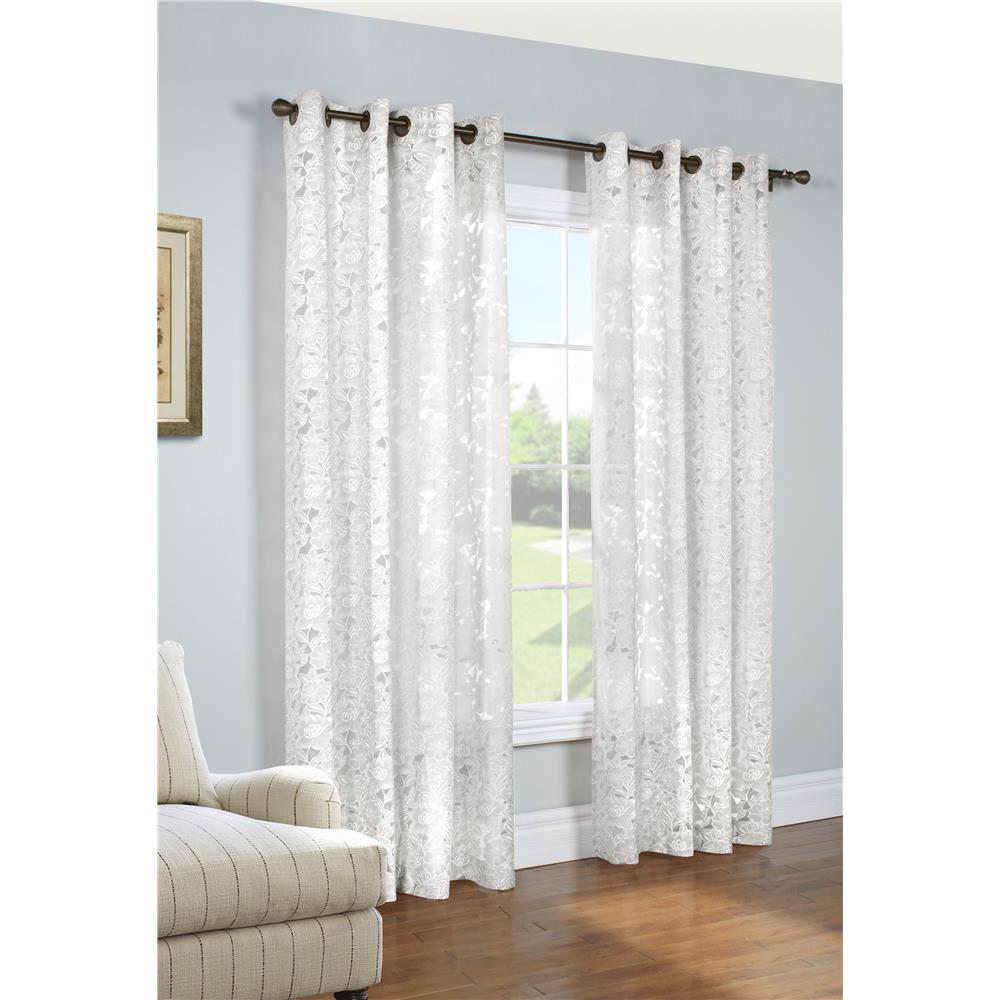
Lace curtain window panels are making a big comeback in design.
Many people associate the origins of this style with the Victorian era (though the fashionable elite featured lace curtains in their windows long before Victoria became queen) – and recently the style has been growing in popularity again in Europe and now also in the United States.
Lace curtain panels can complement a wide array of interior design style and trends, though there are some guidelines to keep in mind to make sure the look is still modern and fresh. Though lace curtains have long been associated with luxury and refined status, today it is possible to achieve the high-end look on a budget.
If you’re considering trying lace curtains in your home, here are 5 expert design tips to guide your choices so that your curtain panels will look contemporary and expensive but will still be affordable:
-
Color
The classic colors for lace curtains are white, ivory, or ecru. And while the classics are classic precisely because they never go out of style, today’s panel designs offer a variety of colorful choices.
From bold reds to beautiful blues and calming grays, you can find curtain panels to accent any color of interior décor you choose. Also, many curtains that come in in the classic colors can be dyed or even tea-stained to the shade that’s just right for you.
-
Pattern
Machine-made lace came into being in the late 19th century, but today’s lace curtain patterns often evoke patterns inspired by earlier hand-woven design.
The key to choosing a pattern for your lace curtain panels is to coordinate with the other furnishings in your room. If your room already features bold design, then a subtle pattern in your curtains is the ideal complement. However, if your room furnishings are more neutral, you can choose to make your windows a statement piece with a larger, eye-catching pattern.

-
Weave
Many curtains on the market today have been woven on Nottingham or Madras looms.
Nottingham is a machine-woven lace typically in a cotton/polyester blend, typically offering all the beauty of a classic lace curtain at a lower cost point. Madras is a 100% cotton scrim that uses an applique process to produce a pattern, so it’s also generally more affordable.
-
Size
When it comes to sizing your curtains, there are basically two different looks you could follow:
The “fuller” look is long and flowing. Typically, the lace will be gathered and measure twice the width of the window. In terms of length, this style will hang down below the windowsill, sometimes even gathering on the floor.
By contrast, the “flatter” look is neat and compact. Often the width of the curtain matches the width of the window and stops right at the window sill, with perhaps a slight ornamental edge. If you prefer the flatter look, many curtains can be custom shortened to fit your exact dimensions.
-
Maintenance
Your lace curtain panels ought to be cleaned once a year. Though many specify a dry-cleaning method, you can often wash them by hand or by machine on a delicate cycle with a mild detergent.
Once washed, you do, though, want to make sure to never, never, never put your curtains in the dryer! When they’re slightly damp you can put them back on their rods to fully dry. You can even try damp ironing to remove wrinkles.
For more lace curtain panel inspiration, check out Going Décor’s collection at: http://www.goingdecor.com/Cat/Window-Curtains/